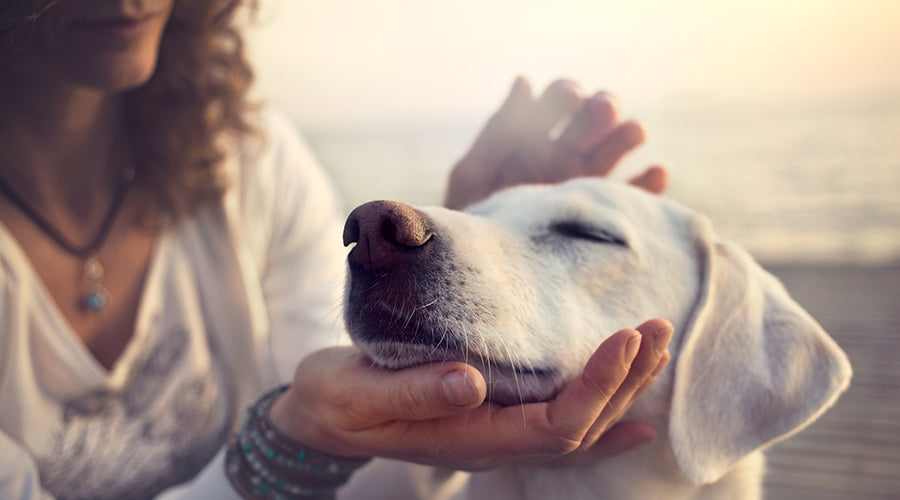Your Cart is Empty
SPECIALS: up to 35% SAVINGS on Bundles+ FREE Shipping on USA orders over $35

Grooming is so much more than just brushing your dog’s fur. Yes, it makes your dog’s coat shiny but it also is a great way for you to assess other elements of your pet’s health. From top to bottom, here’s a list of common things that you should look for when grooming your dog.
Most lumps and bumps on or under a dog’s skin are benign and can include lipoma (a fat-filled tumor) histiocytoma (an overgrowth of immune cells), abscesses (pockets of puss), or even hives. Of course, there are the cases of cancerous tumors including melanoma, soft tissue sarcoma or squamous cell carcinoma. However, regardless of the type of bump, it’s always good to check with your vet as soon as you find it just to be on the safe side.
The warmer months mean that you and your pup are probably spending more time outdoors. Ticks, which are becoming more common across North America each year, carry quite a few diseases (i.e. Lyme disease) that can have serious health consequences for your dog. When grooming, take the time to check the inside of your dog’s ears, between his toes, under the tail, around the groin, around the eyes and under the collar for any parasites that might be trying to burrow their way in. And while you’re at it, check your dog’s fur for little black specks that could indicate your pet is hosting a flea family.
All dogs can get minor cuts and scrapes, especially on their legs and paws. Always be sure to check your furry companion during grooming for any minor injuries and treat them before they get infected.
Symptoms of pain can be easily missed, especially since our animals don’t talk directly to us! One way of checking for painful spots is during grooming – most dogs will yelp or move when a person touches the painful area. Pain can indicate arthritis, inflammation or a more serious condition, so be sure to call your vet if your dog has any signs of discomfort.
If you notice an unpleasant odor coming from your dog, it could be caused by a number of things. He might have rolled in something, but, it’s always good to do a thorough check if you can’t immediately identify why your pup has a potent smell. It could be a sign of skin, oral or ear problems and might garner a trip to the vet clinic.
Many dogs, especially ones with double coats, can get mats due to loose hair not being shed properly. Grooming with a gentle grooming tool like the StripHair Gentle Groomer can help remove loose hair while also supporting the growth and health of your dog’s coat.
Dry skin is a symptom for many conditions such as allergies, parasites, hot spots, stress or even excessive bathing. Routine checks can help you identify these skin conditions at the early stages and ensure your canine friend gets the proper treatment.
Grooming shouldn’t just include the skin and coat! Inspecting your dog’s mouth is key to ensuring his health and happiness. Bacteria and plaque can build up on your pup’s teeth, leading to tartar, gingivitis, receding gums and even tooth loss. This can be avoided by habitually checking your dog’s mouth at a young age and incorporating proper oral care into your grooming routine.
Did you think that pedicures were just for humans? Think again! If your pup’s nails are touching the floor, it’s time for a trim, as long nails can cause both you and your dog discomfort. If your furry friend isn’t a fan of nail trimmings, be sure to incorporate treats and massages into the grooming session to help make him more comfortable. While you’re down there, don’t forget to check the pads of his feet! These provide extra cushioning to help protect bones and joints from shock, as well as provide insulation against weather or rough ground when he’s walking. Check to make sure the pads are free of wounds or any foreign objects.
Last but not least is the eyes! Your dog’s eyes can get dry from the wind or can be scratched by bugs or even his own fur. While you’re grooming, but sure to do a quick look at your dog’s eyes for any abnormalities such as discharge and crusty gunk, tearing, tear-stained fur, cloudiness or a change in eye color.
By grooming your pup more regularly, you’re not only checking on his health and wellbeing, but you’re also creating a time to bond with him! Using The Gentle Groomer tool will make him more tolerant of your checks and together, you and your pup can spend time building that forever connection.